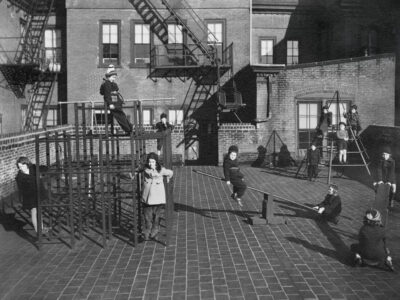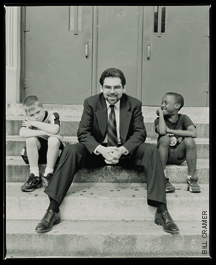
As a college activist, Pedro Ramos C’87 learned the importance of tenacity. Now he’s using it in his drive as Philadelphia’s school board president to improve education opportunities for 213,000 children.
By Susan Lonkevich | Photography by Bill Cramer
Sidebar | The Community’s Schoolhouse
It’s springtime 1986. A group of about 100 students are plotting to take over College Hall to prod the University into divesting its monies from companies doing business in South Africa. Some stealth is in order, because the administration knows that a protest is in the works. It just doesn’t know where.
The students decide to create a diversion: First, they run through Houston Hall; then, while their accomplices hold open the doors, they swarm in through the back of College Hall.
It works! They’re in President Hackney’s office. Now the hard part begins.
Today, at 35, Pedro Ramos C’87 laughs at the dramatics of it all—though not the social cause—as he recounts this emblematic story from his college days. As an undergraduate he spoke out on issues ranging from South African apartheid to the University’s recruitment of minority students, and aired his grievances in a column for The Daily Pennsylvanian called “Muevete,”which is Spanish for “Move.” “One of my college friends has since told me he thought I was angry all the time,” Ramos says. “I think it was just a bad picture in the paper.”
But while Ramos’s approach to social justice has tempered over the years—for one thing, he’s a lawyer now—his ideals haven’t. As the first Latino president of the Philadelphia Board of Education, his activism has merely taken on another form. This time, he is fighting to turn public education into a public priority.
The two weeks before my first interview with Ramos at the beginning of the summer had been unusually turbulent within the school district, which, with 213,000 students, is the largest and one of the most financially-strapped in Pennsylvania. During that time, Dr. David Hornbeck L’71, the city’s superintendent of schools, resigned after six years on the job, explaining that he lacked support from Harrisburg lawmakers for his ambitious (and costly) education-reform plan, called Children Achieving. The Board of Education was forced to adopt a budget with an $80 million deficit and $30 million in cuts to keep local schools running. And the Philadelphia teachers’ union had authorized its leaders to call a strike, if necessary, when its contract expired in August.
As he invites me into his office at the Board of Education building on 21st Street and Benjamin Franklin Parkway, Ramos seems busy—his phone rings constantly—but cool-headed. “I like working through difficult situations,” he explains. And I owe a lot to my Philadelphia public education, so if I am going to work hard at anything, I feel this is what I’m supposed to be doing now.”
Judging by the opinions of those around him, he is adept at this role. In the volatile realm of urban-school politics, Ramos has succeeded in getting along with and earning the respect of just about everyone while taking a stand on the educational issues that are important to him and critical to the city.
“I’m a major Pedro fan—and I’m not alone,” says DebraKahn, the city’s education secretary, who sat on the school board five years ago when Ramos first came on. There were so many receptions held in his honor after he was voted president for the year 2000 by the board last December that she had to start turning them down. “He’s really smart and he’s really committed. He’s got good instincts, but he’s also thoughtful. I think all of those things add up to why he’s been very effective.”
When the district installed metal detectors in its high schools following a shooting, for instance, Ramos insisted that the security measures apply to everyone who walked through those doors—even school board members. “I thought it was at least fairer from a student perspective and made it more like an airport or a courthouse, and less like a prison,” he explains.
On December 7, the morning after he was elected president, Ramos began making the rounds of the General Assembly in Harrisburg, trying to improve the district’s embattled relationship with state legislators to whom they must appeal each year for funds to help pay for the operations of the district, which this fiscal year come with a pricetag of $1.59 billion.
“There is no question that there is a lot of historical baggage between many parts of the state and Philadelphia,” Ramos says, pausing, as he often does, to choose his words carefully. “Some of it is political and some of it is perception. Some of it are biases that go both ways. But I think there is no substitute for personal interaction.” While communications between Harrisburg and Philadelphia have a long way to go—like many priorities in the school district—Ramos says he believes they are improving.
Growing Up and Running Home
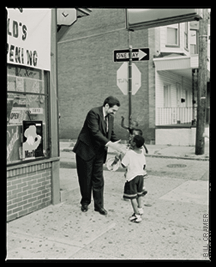
The youngest son of Puerto Rican immigrants with second- and sixth- grade educations, Ramos grew up in a largely Latino and African-American neighborhood in North Philadelphia. At his overcrowded elementary school, he immediately took to reading. The books were sequenced according to difficulty, and Ramos recalls reaching Book K when he was in the fourth grade. “No one had ever gotten to Book K,” he says. “After a few days, my teacher was able to track down a teacher’s edition, and that was my book.”
Later, Ramos was bussed to Conwell Middle School, a racially diverse “magnet” school outside the barrio. The teachers were wonderful to him. The older white kids who hung around the block in the afternoon were not. Ramos recalls being chased and beaten up routinely after softball practice. “I didn’t ask why,” he jokes, but assumes it was because, “We were a little group of kids in little softball uniforms in what was probably seen as a nerdy school in the neighborhood, because it was full of minority students.”
After considering the merits of continuing his education at a neighborhood high school (not the least of which was “a shorter run home”), he instead went on to Philadelphia’s prestigious, public Central High School where he was surrounded by college-bound classmates. When guidance counselors found that he hadn’t bothered applying to any Ivy League schools his senior year, they went ahead and sent in forms to several places, including Penn, to arrange deadline extensions for him.
Financial aid made Penn affordable, but Ramos still experienced a culture shock when he got here. He recalls riding to campus in his family’s green ’74 Chevy Impala, while other, predominantly white students were pulling up in BMWs and Jaguars, and feeling like he had landed on Mars. “It wasn’t exactly Minority Scholars Weekend,” he says,referring to the recruitment event that had initially encouraged him to enroll.
Growing up, Ramos says, “We were relatively well off in our community. My father had a steady job [as a maintenance man] and health benefits and all that. And even though we had lived in public housing for part of that time, we never felt like we were financially distressed.” At Penn, however, “You certainly felt the disparities of wealth and class.”
Ramos, an urban-studies major, soon found his niche. He became a campus activist, leading ACELA, the Latino student association, and the United Minorities Council in pressing for more minority programs, faculty and students at Penn. (As an alumnus, he remains interestedin such issues, serving as a member of the James Brister Society and on the board of the Association of Latino Alumni. His wife, Rafaela Torres C’89, whom he met at a Latino-student event on campus—they still can’t agree on which one—is also active in the ALA.)
Campus organizing came naturally to him, Ramos says, because, “I’ve been around activists since I was in diapers.” His older brother Juan, now 48, was a vocal organizer in the Latino community. As a kid, Ramos would letter the protest signs, providing “free child labor” for some of the many community groups his brother was involved in. “I thought it was kind of cool hanging out with those guys, so I just did it.” Later, at 13, Ramos marched to protest bilingual-education cuts in Philadelphia.
While making waves at Penn, he says, he learned a useful lesson in dealing with bureaucracies: “Tenacity is worth a lot.” Ramos eventually collaborated with the administration to start the Latin American Living Learning program, a residential, cultural-awareness program that still exists in one of the college houses on campus.
On alternate Wednesdays, he challenged the status quo with his DP column. Ironically, Ramos says, “I spent most of my time criticizing the admissions office in their minority recruitment,” when it was Dean of Admissions Lee Stetson who had persuaded him to come to Penn. In another column, entitled “Cowardice and Deceit,” Ramos lambasted everyone from the “oligarchic and greedy” trustees who had not yet divested the University’s holdings from firms with South African ties, to the faculty who “failed to put its money where its mouth is” by transferring their pension funds over to a “South Africa-free option.” Penn’s students, he went on to write, “do little more than whine.”
Today he coyly describes the student protests he participated in as “unscheduled meetings” with the administration—which “Sheldon Hackney and I have been able to joke about since.”
“Obviously I would have preferred not to have students sitting in my office and bringing the University to a standstill,” says Dr. Hackney Hon’93, now a Penn history professor, speaking by phone from the relative serenity of Martha’s Vineyard. “As I recall, they were engaged in an issue, and serious about it, and rather honest. And he [Ramos] was quite good. And the trustees eventually agreed.” Hackney goes on to point out that Ramos “is not the first undergraduate radical to have turned into a civic activist, and, therefore, into a terrific citizen. Ira Harkavy C’70 Gr’79 [director of Penn’s Center for Community Partnerships] led the sit-ins of ’69 and ’70 about the war and then got a Ph.D. at Penn and stayed, and has been a wonderful influence on the city. I would put Pedro Ramos in the same category.”
Ramos continued his activism at the University of Michigan Law School and, as a young attorney with the service-oriented Philadelphia firm Ballard, Spahr, Andrews & Ingersoll, channeled his energies into joining the school board. Since becoming president, board business consumes about 90 percent of his work week—and a good deal of his free time. Ramos consults his palm-sized personal-organizer to give examples of his hectic schedule, filled with meetings, speaking engagements, retirement parties and trips to the state capitol.
The nine-member school board governs the operations of the district and its schools. Among other duties, it buys textbooks, maintains buildings, hires teachers, adopts budgets and interacts with the public. It appoints a superintendent of schools to enforce its rules and prepare guidelines supporting the educational mission of the district.
Despite the demands of his position, Ramos still made time to supervise an internship with the board of education last school year for urban-studies major Jeff Camarillo C’01. “It was by far and away one of the most valuable learning experiences I have had at Penn,” says Camarillo. “He let me sit in on personal meetings in his office and, at every opportunity, he would pull me aside to show me the role of this job.” Ramos even put the student in charge of researching the history and status of a decades-old school-district policy—never implemented—on the teaching of African-American history. Camarillo came up with recommendations and will keep working with Ramos this school year to help see them through.
“I think he is doing a phenomenal job,” the senior adds. “He is able to embrace all people, which is one thing that is so important to being a dynamic leader.” Camarillo says he often saw people’s countenances change as they dealt with Ramos. “There was a group of women with lawyers who came in to meet him to share horrific stories of special-education problems in the district.” One Spanish-speaking parent had been given a document in English and told by a school employee that it was not available in Spanish. Ramos, “in response to that, put the meeting on hold, called the person responsible for this and told them, ‘Please don’t ever say we don’t have Spanish documents. We do.’ They were so impressed with his diligence. That’s something I’ve seen not just with those mothers but with basically everybody he comes in contact with.”
Seeking Parity Not Charity
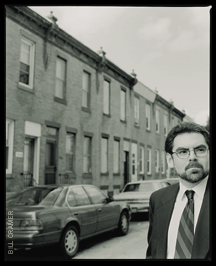
One thousand, nine hundred dollars. That’s the average difference in per-pupil spending between 40 surrounding suburban districts and Philadelphia, according to city school officials. Why the discrepancy? It comes from the way schools are paid for in Pennsylvania. The financial burden is shouldered primarily by state taxpayers and local property owners—with more state aid made available, as a rule, to less wealthy districts. The Pennsylvania Department of Education contends it’s a fair system, and that Philadelphia receives an ample portion of the spending pie, while ranking near the bottom of the state’s 501 school districts in local tax effort. Last year, the Commonwealth shelled out nearly one-fifth of its public-education dollars for the 12 percent of Pennsylvania’s children attending Philadelphia schools.
But city school officials argue that a system which relies so heavily on local property taxes produces an uneven playing field for the state’s schoolchildren. Over the past decade, property values have risen at a slower rate in Philadelphia than in the rest of the state. The city also has experienced a decline in overall population while student enrollment has spiked. And its schools must devote more resources to the special needs created by low-income students.
“The big challenge for Philadelphia and at least a couple hundred other school districts in Pennsylvania is fixing a broken system of funding public education,” Ramos says. “Other states have changed their funding systems so urban and rural schools are not punished by the lack of real-estate wealth in their communities. And the only way that system gets changed is for the public to demandthat change happen.”
News articles about the most recent school budget struggle (resolved, temporarily, when the state advanced more than half of the district’s $660 million in basic education funding for the 2001 fiscal year and deferred $59 million in payments due from the district in exchange for the district’s freeze of a lawsuit) illustrate the longstanding tensions between leaders in Harrisburg and Philadelphia. Philadelphia Mayor John Street, who took office in January, expressed his dissatisfaction with the statesubsidy offered at one point, telling The Philadelphia Inquirer that it “amounts to something just short of putting the padlocks on the [school] doors as early as July. This is a bit of a judgment day in this city.”
Tim Reeves, press secretary for Pennsylvania Governor Tom Ridge, in turn, said the district has “a credibility problem,” because it gets more money than any other district in the state and local leaders threaten each year that schools won’t be able to open.
Hornbeck chose this time to announce big gains in standardized test scores—progress which he predicted would be threatened by budget tightening. In fourth grade, where students have had the most benefit from his reform plan—which includes things like full-day kindergarten and more access to computers—reading and math scores rose for the fourth consecutive year to 58 percent of students performing at or above the basic competency level (a 48 percent improvement).
“Having 42 percent of our youngsters [in fourth grade] failing reading and math,” Reeves shot back, “should still be a very scary number for us and no cause for celebration.” Ramos, however, believes Philadelphia “has a good story to tell” and compares its academic progress favorably to other large cities—“and to many places that spend more.” Ultimately, he says, “you have to measure success in terms of how far you’ve moved, and how quickly.”
For its part, the General Assembly recently passed the Education Empowerment Act, which would allow districts to convert some public schools into independent or charter schools with fewer staffing restrictions; expand parents’ choices about which schools their children could attend and link additional state subsidies to improvement plans that must be submitted to the state education secretary by “distressed” districts like Philadelphia.
Although Ramos supports aspects of that plan, such as the strategic use of charter schools, he makes it clear that he doesn’t view them as a cure for education woes. “It’s not hard to look in every public-school system and find lots of success stories,” he says. “The challenge has been not having it left up to chance whether you get that extraordinary principal or that extraordinary teacher, or that great new building. The challenge is providing an opportunity for all children in cities and rural areas to have a decent shot at a quality education.”
He concedes that the opportunity to do some things “radically different” in Philadelphia schools is appealing. “In all fairness, there’s nothing in the teachers’ contract that the school board didn’t at some point agree to,” Ramos says. “Two parties created a teachers contract that I think at times impedes our ability to effectively manage our people and our resources and serve the real needs of kids.” An example, he notes, “are the vacancy problems created in some of our poorestmiddle schools,” where it’s harder to attract teachers. (Building assignments are determined through a contractual bidding process that takes into account seniority.) “So we end up with the biggest vacancies and the least experienced teachers in the schools where you need [experience] most.”
Neither Ramos nor Ted Kirsch, president of the Philadelphia Federation of Teachers, seemed eager to divulge how the two sides plan to resolve their differences for the next contract. But Kirsch gave Ramos cautiously good marks so far for his openness and listening skills as a board president. “I think he’s more hands-on and more involved than his two predecessors.” When a security problem came up at one of the district’s high schools lastspring, Kirsch recalls, “He picked up the phone to call me and ask how I thought we should handle it. First, I was surprised he called, because I haven’t been called in the past like that, and we were able to work out the problem so it didn’t become a crisis. It shows a different leadership style.”
Being Able to Listen While People Scream At You
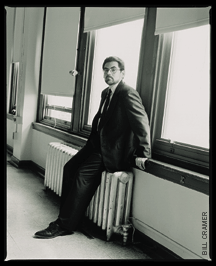
At 1:30 p.m. on July 24, time for the scheduled school board meeting,
a woman wheels a cart stacked with binders of information the size of
telephone books into the meeting room and sets them on the table in
front. The chairs remain empty as board members digest late-breaking
news on a legal matter.
The rest of the room is already packed, however,
with parents ready to protest cuts in the budget for pre-school education.
While their younger siblings color or crawl on the floor, older children
are holding posterboard signs with marker-scrawled slogans similar to
ones Ramos made at their age.
Silver-haired white men peek from their portraits
along the ornately molded walls, down below on the TV news cameras and
wiggling children with dolls and juice bottles. There is no picture
hanging yet of the dark-bearded Ramos—the youngest board president in
the city’s history.
Ramos says his youth usually seems to be an asset.
Parents were pleased to see someone elected to this post who has children
enrolled in public schools. (His daughters are entering first and fourth
grades.) An occasional drawback, he says, is the need to “draw on the
experience of people who have been around longer and have seen more.”
One lesson Ramos had already acquired is “being able
to listen while other people are screaming at you.” He says, “I’ve developed
a lot of positive relationships with people I’ve met while they were
yelling at me because Irepresented an institution.” If you can
listen over the noise, he says, often you’ll either find out “what’s
really upsetting people is something else than what’s been put on the
table, or, even if you disagree or can’t help, you’ll [discover] there
is roomfor compromise.”
An example was the series of meetings the board held
earlier in the year to field residents’ concerns about plans to build
a Penn-assisted elementary school at 42nd and Locust streets. “I think
people expected us to kind of ram something down their throats,” Ramos
says. “When we weren’t acting that way, I think we developed a fair
amount of credibility.”
The agenda at the current board meeting is packed
with items that demonstrate the array of challenges in running a large
urban school district—even with credibility intact:
• A public defender makes the case for a 15-year-old boy who faces expulsion for accidentally setting part of a girl’s hair on fire with a cigarette lighter while riding the school bus. Because he has no prior record and has shown improvement in behavior, the board votes for a less-severe punishment. (It expels another student, who carried a weapon to school in clear violation of district rules.)
• The father of a 13-year-old born to a drug-addicted mother argues for a better classroom placement to manage her pronounced Attention-Deficit-and-Hyperactivity Disorder.
• A mother complains about cuts in the mentally-gifted program at her son’s school.
• Backed by a rabbi and minister, participants in the Parent-Cooperative Nursery programs in Northeast Philadelphia object to the board’s “cruel decision” to charge fees, which they argue will make the program unaffordable. “Most of the issues that come before us are absolutely unfair,” superintendent Hornbeck says at one point, pressing his frequent case against the disparities in public-education funding. “We’ve got to find a way to let the kids in this city have the same chances as in other districts.”
Earlier that month, Ramos and his wife were eating dinner in Paris while he was participating in an Eisenhower Exchange Fellowship, studying the successful system of early-childhood education in France. (School starts as early as age two. Teachers and training are paid for by the national government; cities pay for buildings and supplies.) At the next table, a man was dining with his precocious five-year-old daughter. The three adults struck up a conversation about their children and their countries’ education systems.
“He and his wife made the decision that they were going to take their daughter out of a very prestigious, private Paris school and put her in a public school,” Ramos says. “His daughter liked it better. He liked it better—and thought it was a good school. This was a well-to-do oncologist. I haven’t had that discussion with oncologists in Philadelphia.”
Their Parisian acquaintance “has as much at stake [in the system] as somebody in a poor rural area,” Ramos says. France has “a school system which everyone in all segments of society feels they benefit from, in contrast to the big cities here, where public education has largely become about the overwhelming majority paying for the education of the poorest portion of the community.
“Unfortunately,” Ramos continues, “I think too much of public-education discussions are almost in the framework of charitable acts as opposed to core mission.”
Back in the United States, Ramos’s work—and the district’s challenges—continue: a superintendent search, teachers’ contract talks and a perpetual budget-juggling act all promise to occupy his time in the remaining months of his first year as board president. It begs the question of whether he will choose to stay on in this difficult post next year if reelected.
“It’s a good question,” says Ramos. “It’s one that I’ve put to myself—one that I have not yet answered. I will have to get closer to that time before I make that call.” In any case, he plans to keep involved in public education, perhaps campaigning on behalf of more specific issues, such as “educating three- and four-year-olds, and for the importance of continuing full-day kindergarten here in Philadelphia and making it the norm elsewhere.
“Even after leaving office, I will continue to be involved in public matters,” Ramos says. After all, “You either like this stuff or you don’t.”
SIDEBAR
The Community’s Schoolhouse
Enrollment will be diverse, class sizes small and public spaces generous at the Penn-assisted school that’s soon to be under construction.

The shovels haven’t hit the dirt yet, but plans to open a new, Penn-assisted public school in West Philadelphia next fall are moving forward. And as part of this project, the University recently announced an expanded set of initiatives to aid existing schools in the neighborhood.
In July the Philadelphia Board of Education approved a racially and economically diverse enrollment area for the new pre-K-8 school, ending months of debate about who will attend. Construction begins this fall for the $21 million, 100,000-square-foot facility, which will feature smaller class sizes and serve as a hub for teachers’ professional development as well as a community center.
“It is quite clear that no catchment area can ever please everyone,” notes Stephen Schutt L’83, vice president and chief of staff for University president Dr. Judith Rodin CW’66. “But I do think this one is thoughtful and well-considered by the school board. It’s truly about as diverse an area as one can imagine.” What Penn didn’t want, he says, was for enrollment to be determined by lottery. “We didn’t feel that was a fair or appropriate way to build community in University City.”
Next September three classes each of kindergartners and first-graders will start school on the site, at 42nd and Locust streets, using existing, renovated buildings. The new school should be complete around February 2002, and it will reach full enrollment over the next few years. (Penn will build the facility under what’s known as a “turnkey developer” arrangement, getting repaid by the district when the keys are turned over upon completion.)
Under an agreement with the school district, Penn will provide $700,000 a year for 10 years for its operation, and the Graduate School of Education will contribute academic support and training.
But under the latest plan for the school’s development, the University also will give $1.5 million over three years to the aging Lea Elementary School—just four blocks away—to help reduce its class sizes, support its new library and make other improvements.
In addition, Penn has secured commitments from two other institutions to assist local schools. Drexel University has agreed to work with Powel Elementary School and the University of the Sciences will work with Wilson Elementary School.
And, following through on an earlier pledge, Penn reached an agreement with the University City Science Center to provide land at 38th and Market streets for the construction, starting in the fall of 2002, of a new facility for George Washington Carver High School for Engineering and Science.
“Everyone who’s been involved in this project agreed from the very beginning that we did not want to create a single, isolated, privileged school,” explains Schutt, who serves on the project’s coordinating committee. “We wanted to introduce a new school into the neighborhood that could become part of the network of existing schools and provide broader enhancements and improvements to public education throughout University City.” As planning progressed, he says, “It became apparent that the existing schools needed significant help themselves.”
With a 700-student limit for the new school, many local residents were worried that the enrollment issue would divide the community and put neighbors’ children in starkly different learning environments from one another. Amy Williams, a West Philadelphia resident speaking on behalf of the University City Community Council Committee on Education, said the new plan “significantly addresses our concerns,” but warned the group will continue to monitor its progress. ”We expect to see all of the commitments which are stated in this proposal implemented in a timely fashion,” she said during the school board meeting at which the plan was announced.
Of the school-age children in the attendance zone, 55.9 percent are African American, 19.8 percent are Asian, 18.3 percent are white, 5 percent are Hispanic and 1 percent are Native American. The median household income for the total area is about $25,000.
With its northern boundary at Sansom Street, the enrollment area goes up as far west as 47th and as far east as 40th, then zigzags past Baltimore Avenue for up to several blocks on the southern end. School district officials say the plan achieves the diversity both the district and Penn were looking for, and alleviates some of the overcrowding in other West Philadelphia classrooms.
Board of Education President Pedro Ramos C’87 says the project is significant on a number of levels—not the least of which is Penn’s choice to build a public rather than a private school. In addition, he says, Penn’s investment “gives us an opportunity to demonstrate that, with some additional resources, public schools could do a lot more.”
Construction was scheduled to start in March, but got delayed, Schutt explains, when it became apparent the original design would be too expensive, due to rising construction costs. “So we had to go back to the drawing board,” he says, “and I think we did it incredibly successfully,” preserving the important elements of the original design.
Planning for the new school has been an intensive process, involving the recommendations of three planning committees composed of University and school district staff members, parents and neighborhood residents, as well as more informal input by the public.
Education
“This is going to be a school where the teachers are learners,” says Dr. Susan Fuhrman, dean of the Graduate School of Education and another member of the coordinating committee. This should be happening at all schools, she adds, but here it will be emphasized at every turn.
Teachers might come together in a video lab at the school to watch a taped or live broadcast of a classroom demonstration given by one of their peers. Or a less-experienced teacher could spend several weeks working with a mentor on a problem area. Educators throughout West Philadelphia will come on-site for workshops or spend time in residencies there to bring back ideas for their own schools.
“Professional development is going to be woven into the very fabric of this school,” adds Dr. Nancy Streim, associate dean of the Graduate School of Education and chair of the educational-program committee. “Professionals in all fields need opportunities to keep up with the current literature and techniques, and to collaborate with their colleagues and peers,” she says. “But there have not been as many opportunities for educators to do that.”
Streim envisions the new school as a place which will use the community as a laboratory for learning, provide students with a technology-rich environment and possibly group students in a couple of grades together for better continuity in instruction. “Rather than sending kids on a field trip twice a year, we’re imagining the children using resources in the community on a regular basis, whether it’s University facilities, parks or cultural institutions,” Streim says. She also expects members of the community to come into the school regularly. “One could imagine that a small-business owner in West Philadelphia might work with a group of middle-school students on applied math and basic economics issues, or the University City Arts League might offer some of their activities to children in the school.”
The concept of multiple-age groupings, she says, recognizes the fact that children learn at different paces, and it allows individual learning to “occur at its own trajectory.” Because they would be with the same small group of children for two years, teachers could get to know their students better.
“To break down some of the traditional boundaries” of learning, Streim’s committee also advocates extended-day and year-round schooling. Just as valid as the math lesson held during school hours, she points out, may be the time students spend at 4 p.m. in the studio with resident artists.
The search for a school principal will begin this fall and core staff will be hired after that. Streim says they’ll be looking for candidates who are not just well-qualified in their “content areas,” but who also have experience with using technology or leading professional-development programs for their peers.
Design
“Learning and education,” says Stephen Schutt, “have truly driven the process of school design. The architectural plans are the work of Tony Atkin GAr’74, an adjunct professor in the Graduate School of Fine Arts who is with the Philadelphia firm Atkin Olshin Lawson-Bell.
Tom Lussenhop, managing director of institutional real estate for the University and a co-chair of the new school’s facility/site committee, notes some of the highlights, which include places for teachers to retire to discuss professional development; more classrooms than in a typical school to accommodate the lower student-teacher ratio; and generous-sized classrooms to “permit an easy flow of professionals in and out of the room in a way that doesn’t interrupt the class.”
Natural features will be retained where possible on the school property, providing both recreational outlets and opportunities for the occasional outdoor biology lesson, he says. “There is not just one playground. There are multiple outdoor spaces that the building opens up onto.”
In contrast to what one might find in a traditional school, this building also will feature a mix of assembly spaces—“sort of public squares, if you will—within the school,” Lussenhop says. “Flexibility is the key word in all of this.” An atrium at the front of the building, a large seminar room on the third floor, a cafeteria, and a combined gym/auditorium will provide places for students, staff and the community to gather.
Community
Planners
envision that the new school will offer a range of recreational opportunities
and services to the community, from computer training and arts classes
to day-care, parent-education programs and home-ownership workshops. It
could also be a venue for civic forums, musical presentations and club
meetings.
“As
close as we can get to this, we really would like this to be a 24-hour-a-day
facility,” says Schutt. The idea of a school that is a center for community
activity “has been a driving force for this project from the start.”
The
Parent-Infant Center, which currently operates day care on the school
site, will continue to do so and will likely expand its services. (Another
tenant on the site, the Penn Children’s Center, has been relocated.)
“It’s
been part of a vision of University-community relations that Judith Rodin
brought to the University when she came here in 1995 that we establish
a place of this sort,” Schutt says.
“I think the benefits of that for the University will be a stronger, more
vibrant community at our doorstep, and I think the benefit to the community
will be a more engaged university participating in its affairs and activities.
And I think everyone is going to benefit as a result of that.”




